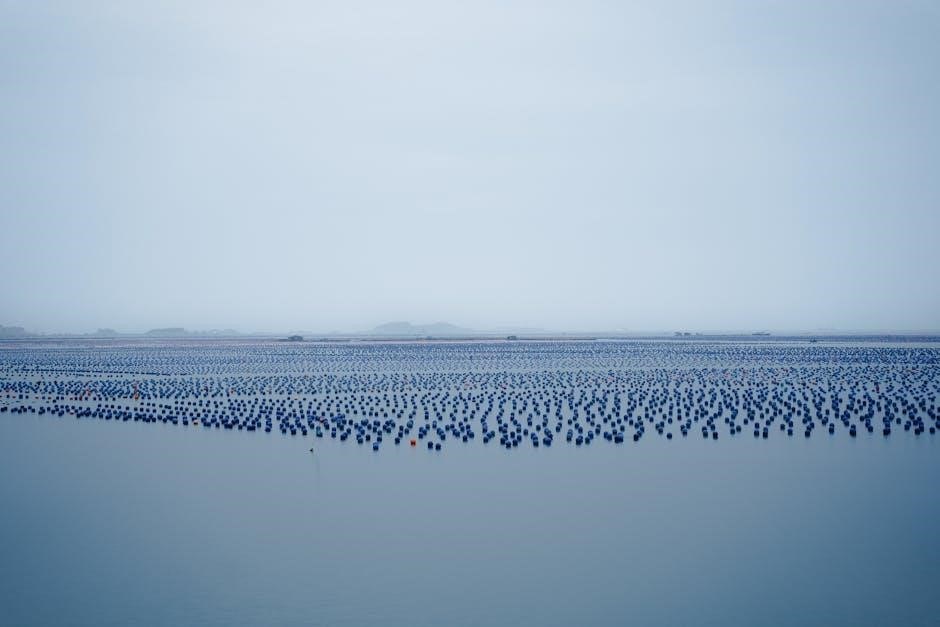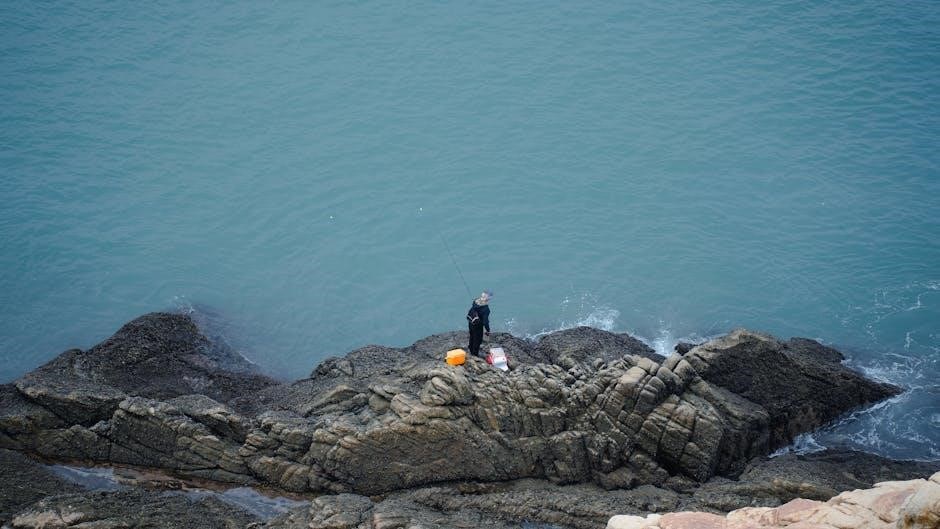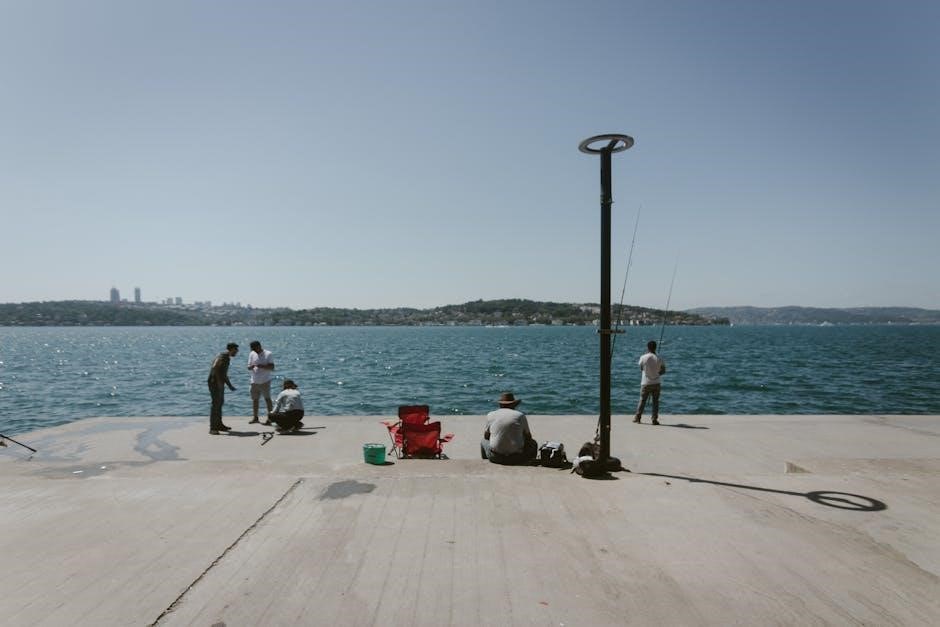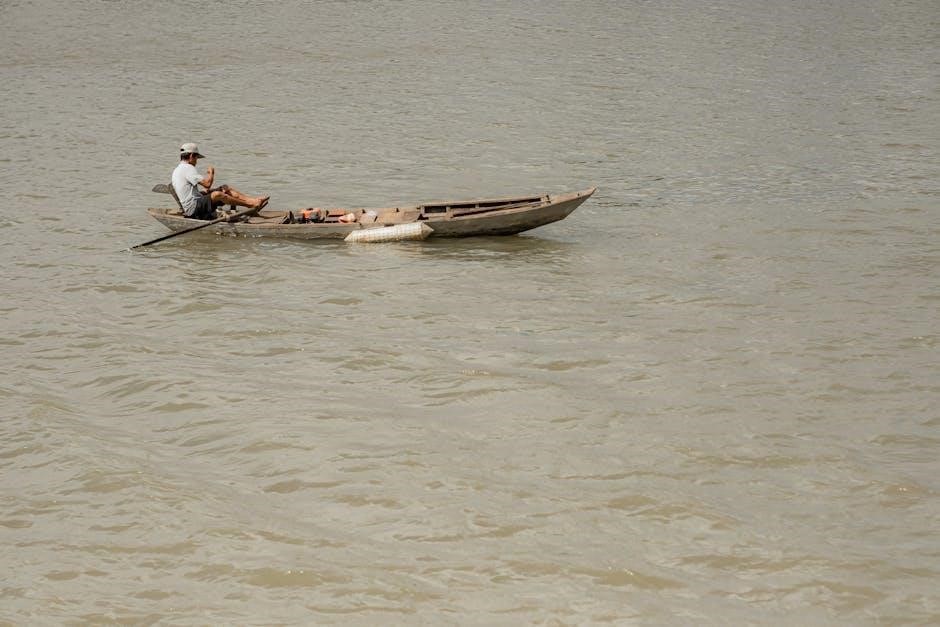Gratuity for fishing guides is a customary way to express appreciation for their expertise, effort, and dedication to ensuring a memorable experience on the water.
Why Tipping Matters in the Fishing Industry
Tipping is a vital expression of appreciation for fishing guides, reflecting the quality of service and effort they invest in ensuring a successful and enjoyable experience. Guides often rely on gratuity as a significant part of their income, as their earnings may depend on customer satisfaction. A fair tip acknowledges their expertise, patience, and dedication to providing a memorable trip. It also incentivizes guides to go above and beyond, fostering a positive relationship between anglers and professionals. By showing generosity, anglers contribute to the guide’s livelihood and reinforce the value of their hard work. This mutual respect enhances the overall fishing culture, benefiting both parties and the industry as a whole.
Factors Influencing Gratuity Amount
Gratuity amounts are influenced by professionalism, trip success, and regional customs, ensuring fair compensation for guides based on their effort, expertise, and the overall experience provided.
Professionalism and Service Quality
A guide’s professionalism and service quality significantly impact gratuity. Their expertise, friendliness, and willingness to ensure a memorable experience are key factors. Many guides rely heavily on tips, as their income may depend on them. A guide who goes above and beyond, providing exceptional knowledge and making the trip enjoyable, typically receives a higher tip. Conversely, poor service or lack of effort may result in a smaller gratuity. Ensuring guides are fairly compensated for their work is essential, as they often cover expenses like gear and bait themselves. This makes tipping not just a gesture of appreciation but a vital part of their income.
Success of the Fishing Trip
The success of a fishing trip often influences gratuity, though it’s important to note that tipping should not solely depend on the number of fish caught. Guides cannot control all variables like weather or fish behavior, so their effort and dedication are more reflective of their worth. A successful trip, defined by catching fish and enjoying the experience, may lead to a higher tip. Conversely, a less successful trip still warrants fair compensation for the guide’s time and expertise. Tipping should acknowledge the guide’s hard work, regardless of the day’s outcome, as they strive to provide a positive experience whether fish are biting or not.
Regional Tipping Customs
Regional tipping customs vary, influencing how much anglers tip their fishing guides. In some areas, a 10-15% tip is standard, while others expect 20-25%. For example, in places like New England, a 20% tip is common, reflecting the local culture of generosity. In the Southern United States, a 15-20% tip is typical. Additionally, in regions where guides rely heavily on tips for income, guests are often more generous. It’s essential to research local norms before your trip to ensure appropriate gratuity. These customs reflect the community’s appreciation for the guide’s role in their fishing experience. Understanding and respecting these practices fosters a positive relationship between anglers and guides, enhancing the overall fishing trip experience.
Standard Tipping Rates
Standard tipping rates for fishing guides typically range from 10% to 25% of the trip’s total cost, reflecting service quality and regional tipping customs.
Private Charter Tipping Etiquette
For private charters, tipping etiquette suggests basing the gratuity on the guide’s professionalism, effort, and the overall experience. A common range is 15-25% of the charter cost, reflecting service quality and regional norms. If the guide exceeds expectations by providing exceptional knowledge, safety, and personalized attention, consider leaning toward the higher end of this range. Conversely, if the service is subpar, adjustments can be made accordingly. It’s important to present the tip respectfully, either directly to the guide or through the charter company if applicable. Some anglers also consider additional gestures, such as offering a small bonus for exceptional performance or cleanliness of the catch. Remember, tipping is a reflection of satisfaction with the service provided.
Group Charter Tipping Norms
When participating in a group charter, tipping norms typically involve pooling contributions from all anglers to present a collective gratuity. For a group of five anglers, for instance, a total tip of $200 is often expected, equating to $40 per person. This amount may vary based on the size of the group, the duration of the trip, and the overall quality of service provided by the crew. It’s customary for one person to collect contributions from the group and present the tip to the captain or guide at the end of the trip. This approach ensures fairness and simplifies the process for everyone involved. Tipping in group charters reflects shared appreciation for the crew’s efforts in making the experience enjoyable and successful.
Examples from Real-Life Scenarios
Real-life examples highlight common tipping practices in fishing charters. For instance, on a private charter costing $400, a 15-25% tip ($60-$100) is typical, reflecting the guide’s effort and service quality. In group charters, such as a boat with five anglers, a total tip of $200 is often expected, averaging $40 per person. Another example: if a guide charges $200 for a day trip, a $50 tip (25%) acknowledges exceptional service. These scenarios illustrate how gratuity varies based on trip type, cost, and satisfaction, providing practical insights for anglers planning their fishing excursions.

How to Present Gratuity
Gratuity should be presented discreetly, either in cash or via card, reflecting genuine appreciation for the guide’s efforts. Timing and method matter to ensure it’s well-received.
Timing of the Tip
The timing of presenting gratuity to a fishing guide is crucial. Tipping at the end of the trip is most common, allowing you to reflect on the overall experience. Some anglers prefer to tip beforehand to ensure good service, while others wait until the trip concludes to assess their satisfaction. If tipping a group, consider pooling contributions beforehand to simplify the process. Regardless of when you choose to tip, ensure it is done discreetly and respectfully. A heartfelt thank-you or handshake can accompany the gesture, making it feel more personal. The key is to present the tip in a way that feels natural and appreciated by the guide.
Handling Group Tips
When fishing with a group, coordinating gratuity ensures fairness and avoids confusion. Typically, one person collects contributions from all participants and presents the tip to the guide. For group charters, a total gratuity of 15-20% of the trip cost is standard. For example, on a $1,000 charter with five anglers, a $150-$200 tip is appropriate, with each person contributing $30-$40. This approach ensures the guide and crew receive fair compensation for their efforts. Group tipping also fosters camaraderie and shared appreciation for the experience. Always communicate with fellow anglers to agree on the amount beforehand, ensuring a smooth and respectful process for everyone involved.

Alternative Ways to Show Appreciation
Beyond monetary tips, consider non-monetary gestures like handwritten thank-you notes, sharing your experience online, or offering small tokens of appreciation to show gratitude to your guide.
Non-Monetary Gestures
Non-monetary gestures can be a meaningful way to show appreciation for your fishing guide’s efforts. These gestures focus on expressing gratitude through thoughtful actions rather than financial compensation.
- Write a heartfelt thank-you note to acknowledge their dedication and effort.
- Share your experience online by leaving a positive review or recommending them on social media.
- Offer small tokens like a favorite snack, a bottle of wine, or a useful fishing accessory.
- Provide feedback that highlights their strengths and professionalism.
These gestures show that you value their service and care about their hard work.
The Impact of Reviews and Referrals
Positive reviews and referrals significantly impact a fishing guide’s reputation and business growth. By sharing your experience online, you help others make informed decisions, potentially attracting more clients to the guide.
- Online reviews enhance credibility and visibility, making it easier for guides to attract future customers.
- Referrals are a powerful endorsement, often leading to repeat business and a stronger professional network.
- Constructive feedback in reviews can help guides improve their services and exceed client expectations.
Both reviews and referrals serve as invaluable tools for guides to build trust and grow their business in the competitive fishing industry.

Gratuity is a vital expression of appreciation for fishing guides, reflecting their dedication, effort, and commitment to providing memorable experiences on the water.

Importance of Gratuity in the Fishing Guide Industry

Gratuity plays a crucial role in the fishing guide industry, as it often supplements the income of guides and crew members who may rely heavily on tips. Many guides earn a base pay that is minimal, with tips making up a significant portion of their earnings. A generous tip not only reflects satisfaction with the service but also incentivizes guides to provide exceptional experiences. Additionally, gratuity helps maintain the quality of service, as it encourages guides to go above and beyond for their clients. This practice fosters a positive relationship between anglers and guides, ensuring a rewarding experience for all involved.

Frequently Asked Questions
Common questions include appropriate tip amounts, when to tip, and who to include. Standard rates range from 15-25%, reflecting service quality and crew involvement.

Common Concerns About Tipping
Many anglers wonder about appropriate tipping amounts and whether it should depend on the trip’s success. Others are unsure if they should tip the captain, mate, or both. Some question if tipping is mandatory, while others worry about how much to give if the trip was unsuccessful. Additionally, there’s confusion about whether to tip individually or as a group, especially on shared charters. Guides often emphasize that tips should reflect the quality of service rather than the number of fish caught, as their effort and expertise are what truly matter. Clarifying these concerns ensures a fair and meaningful gratuity for the crew.